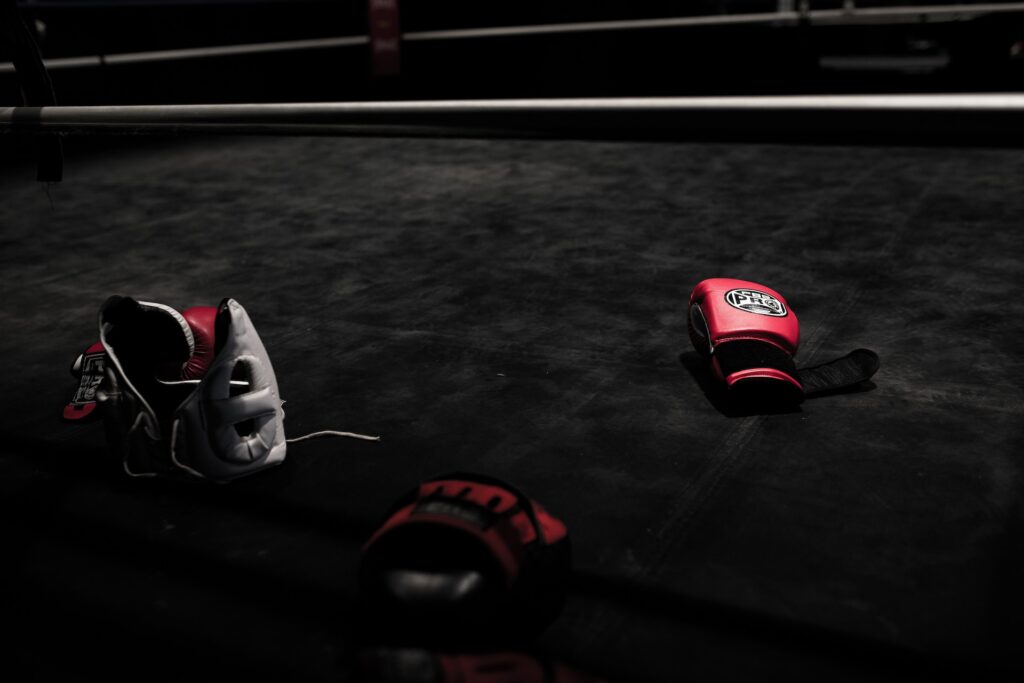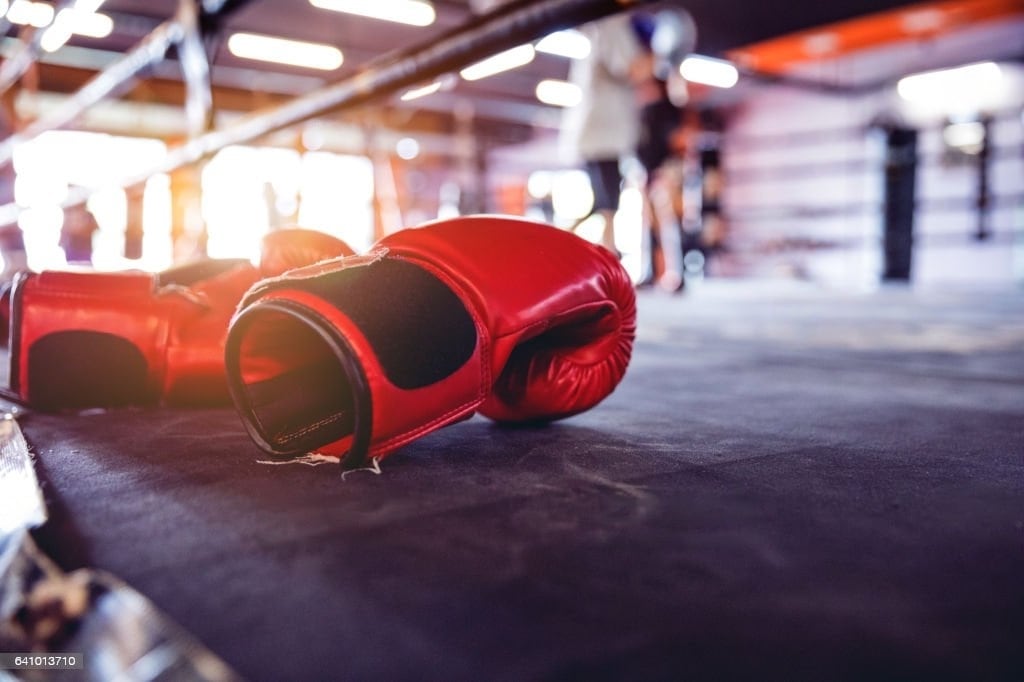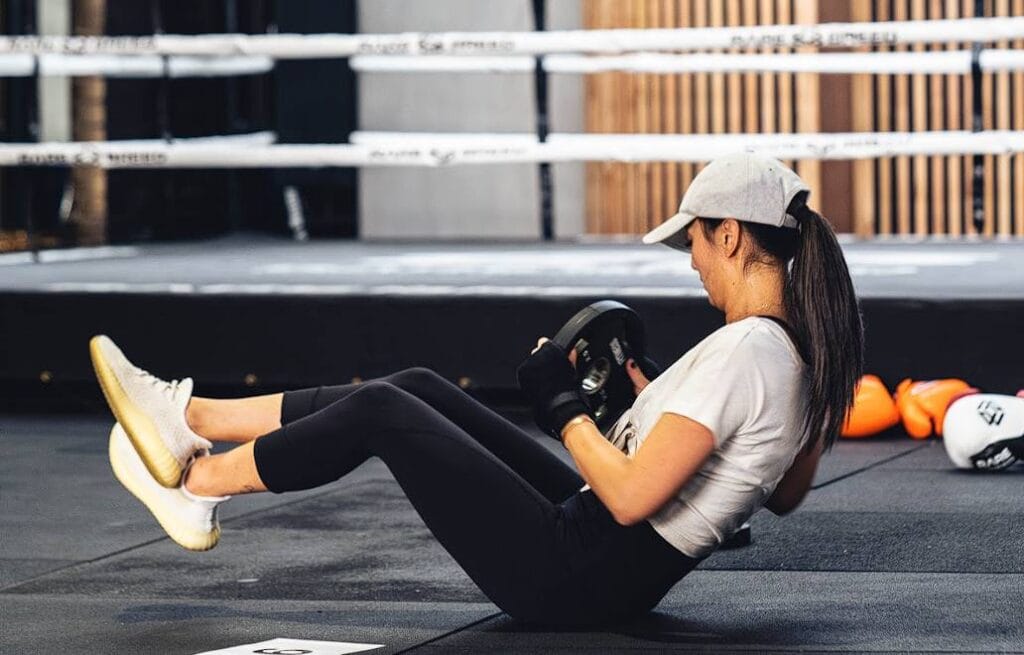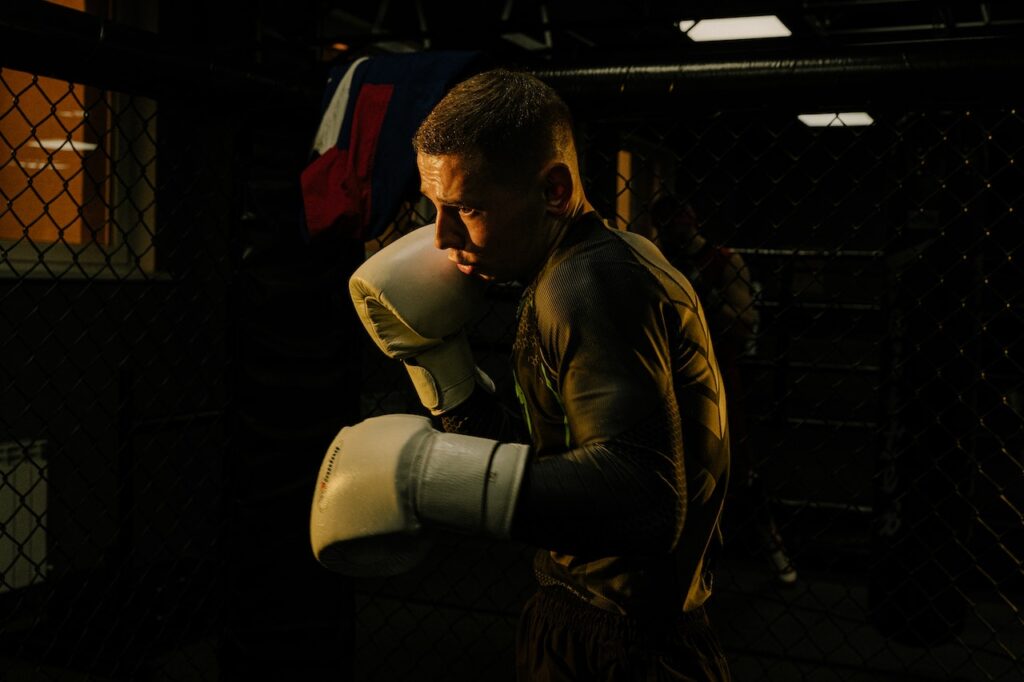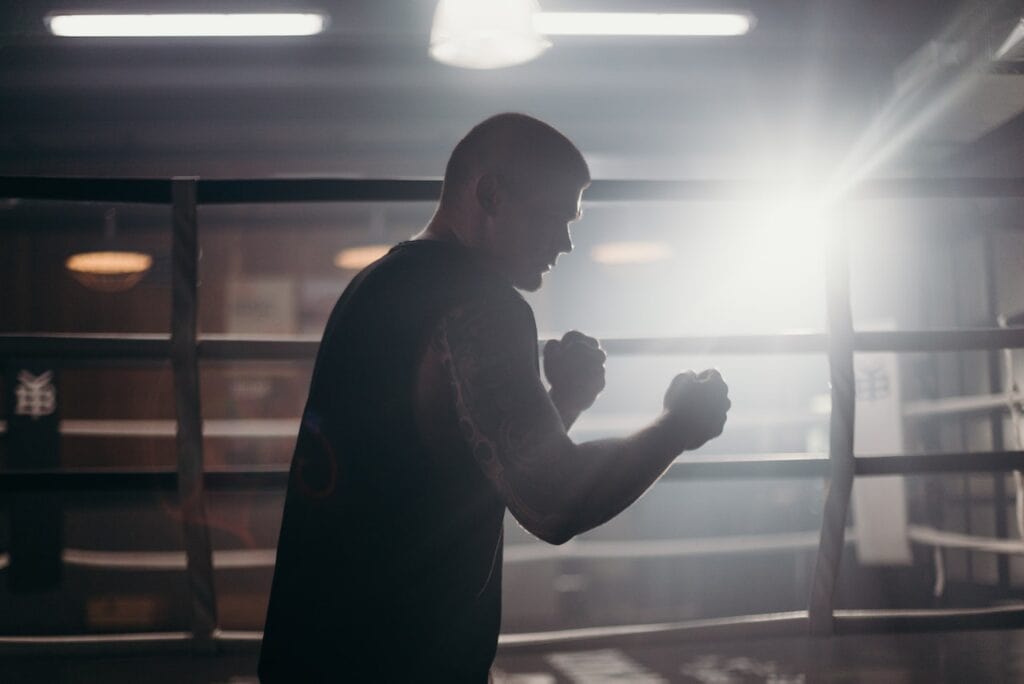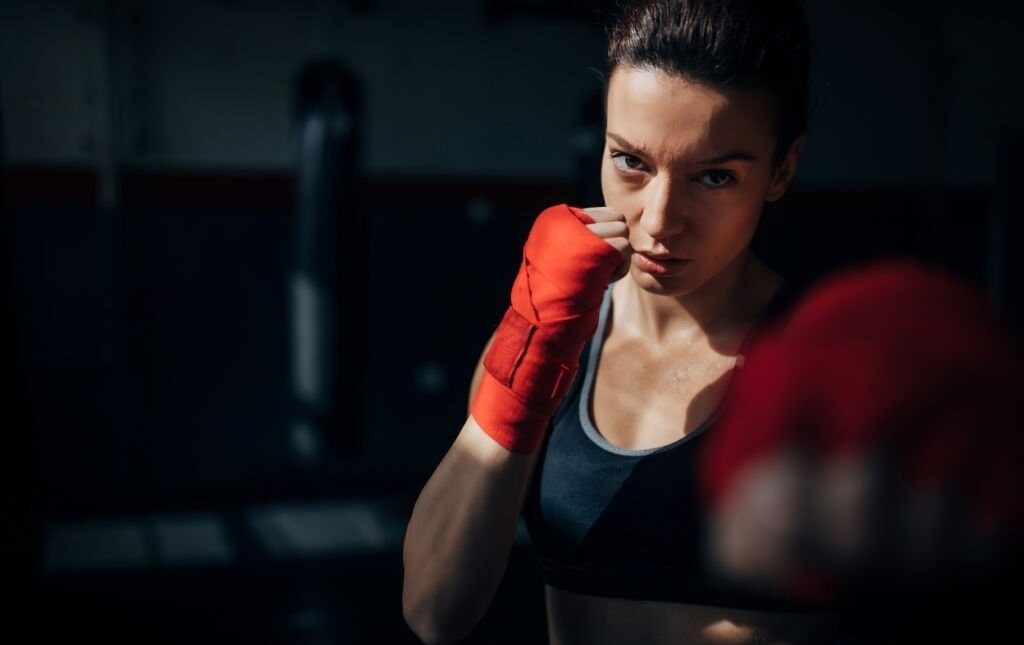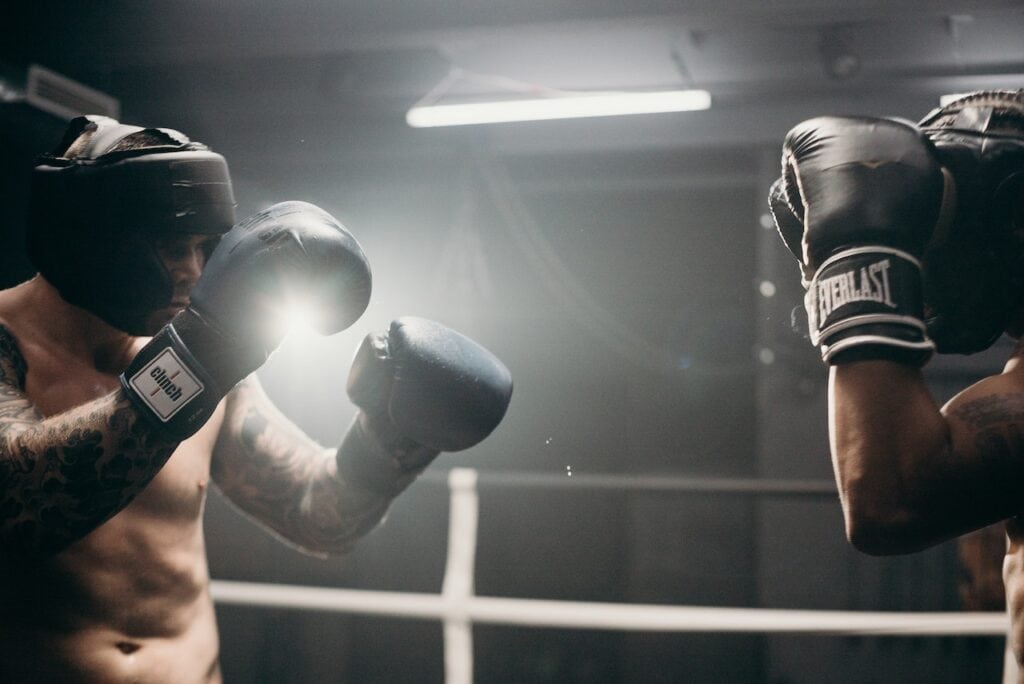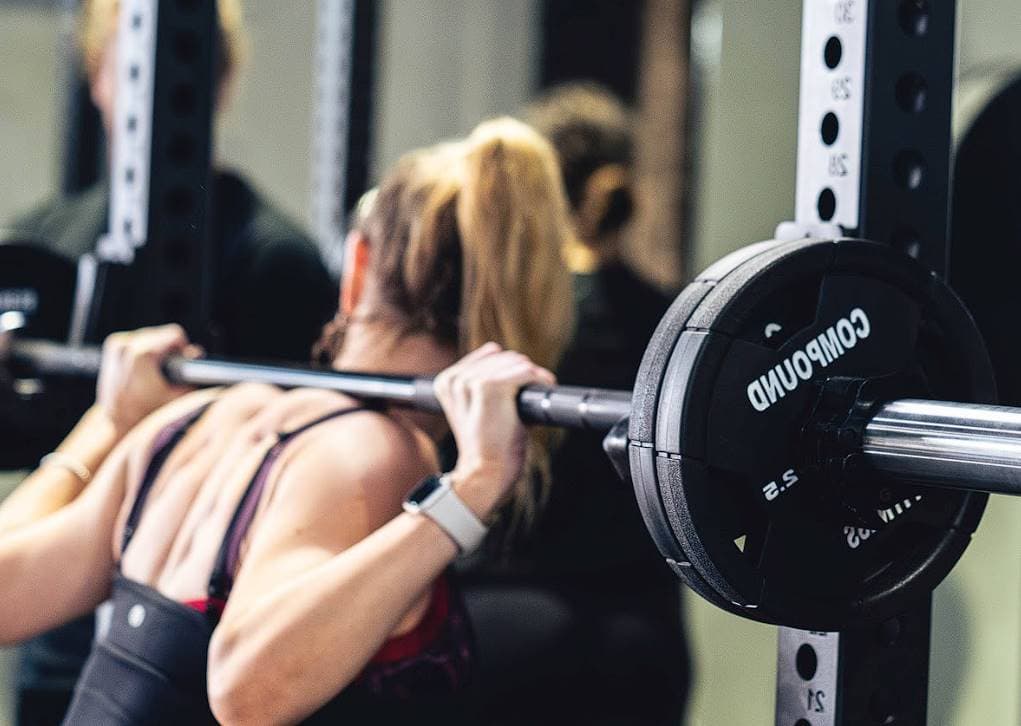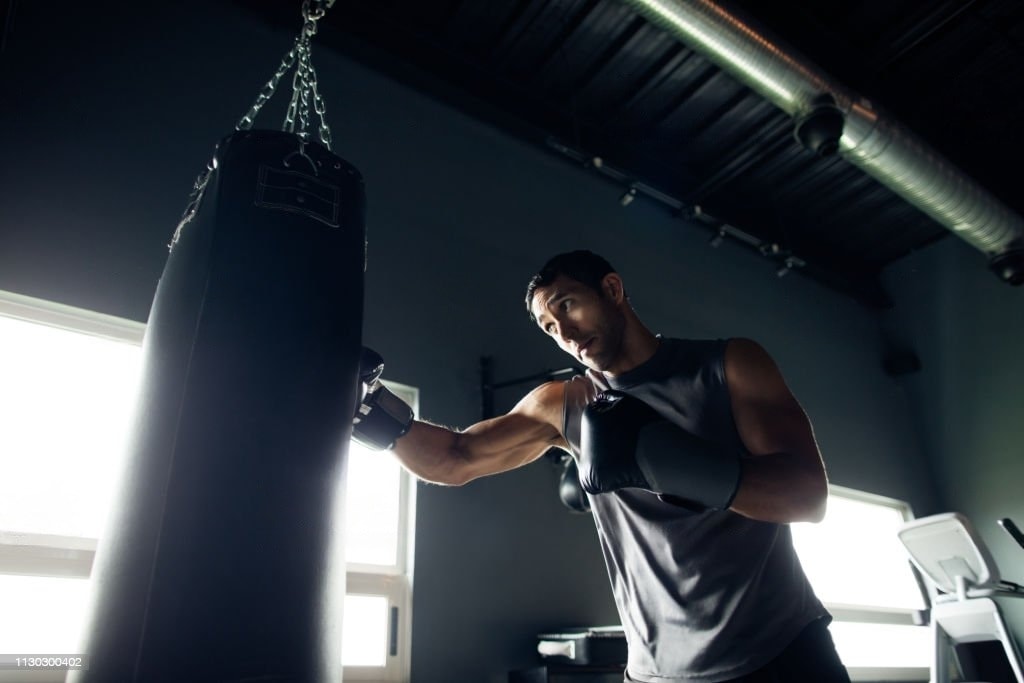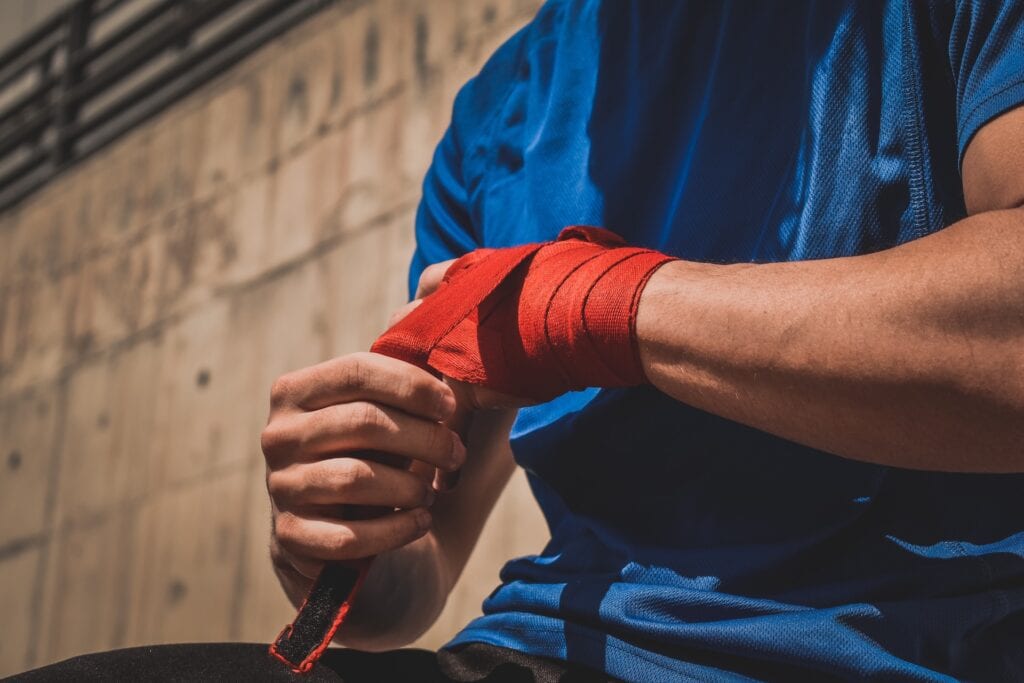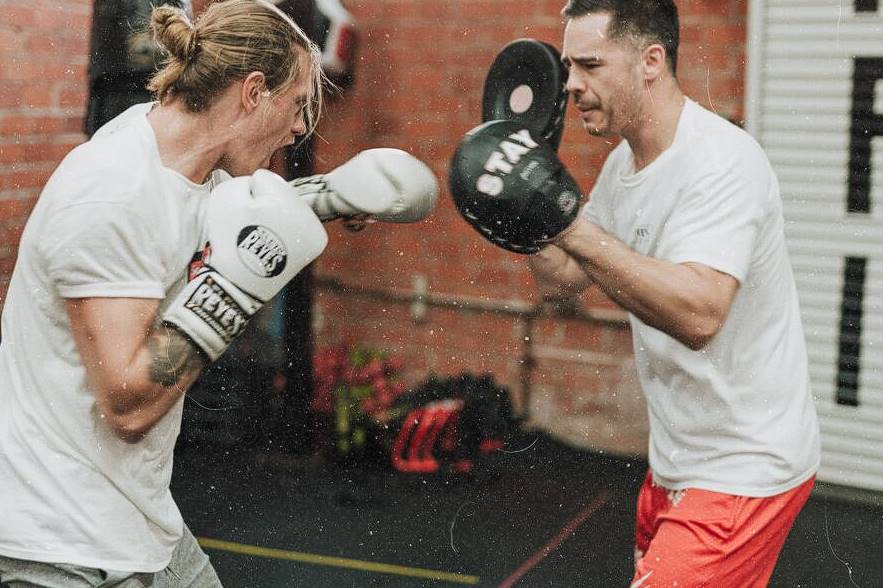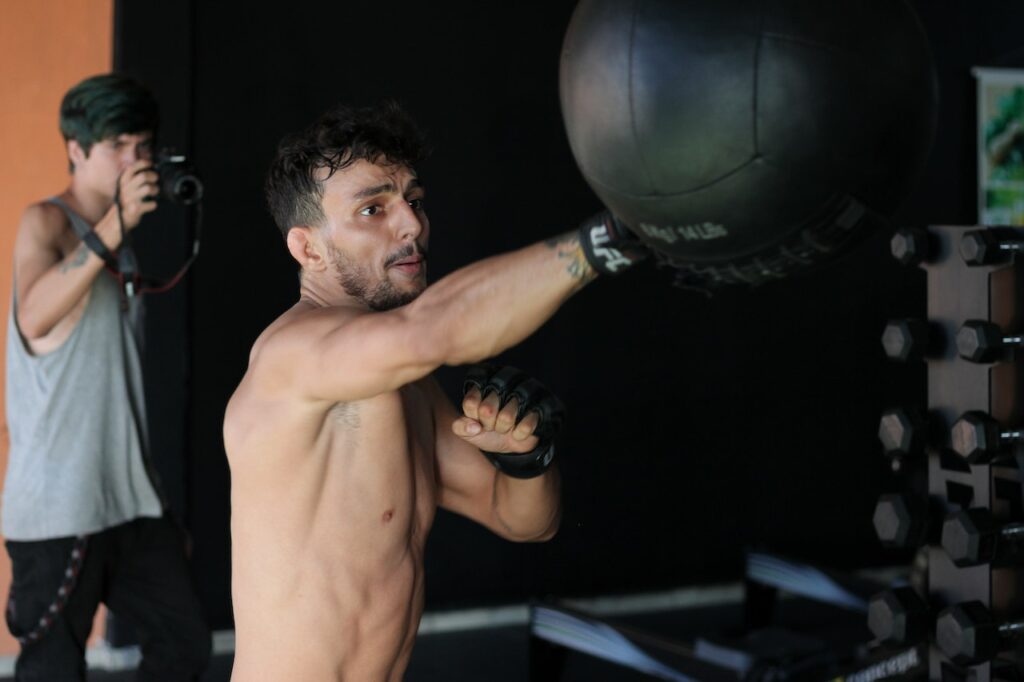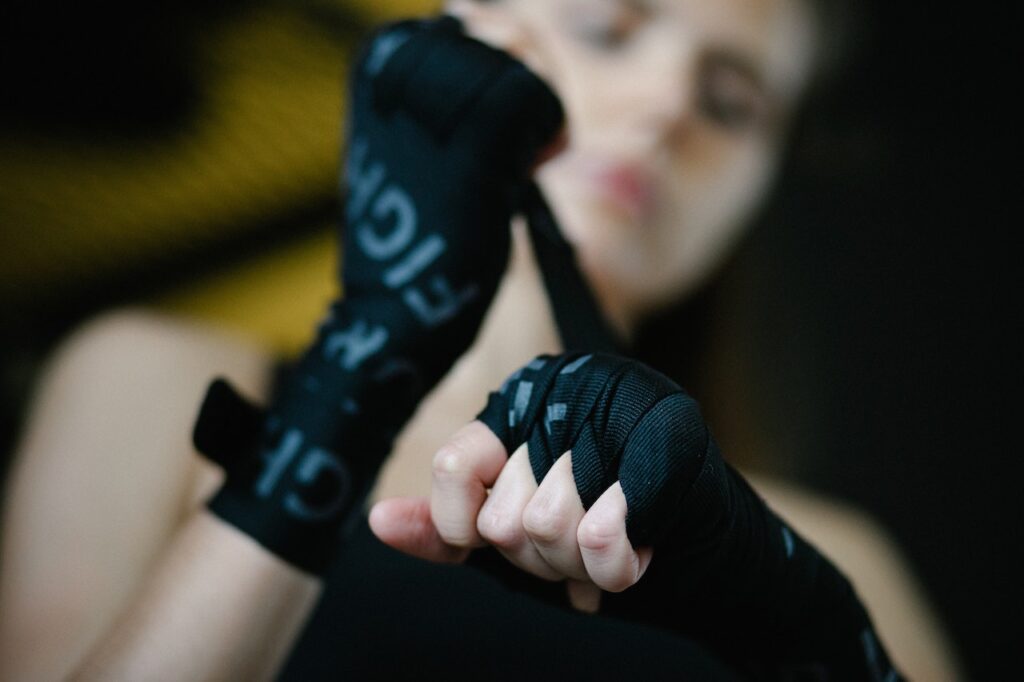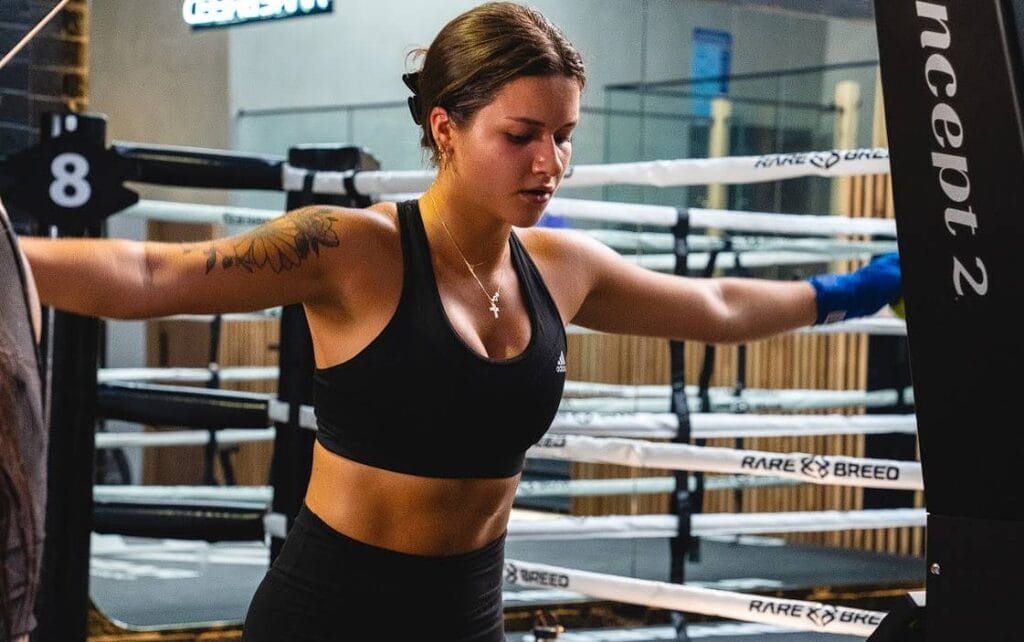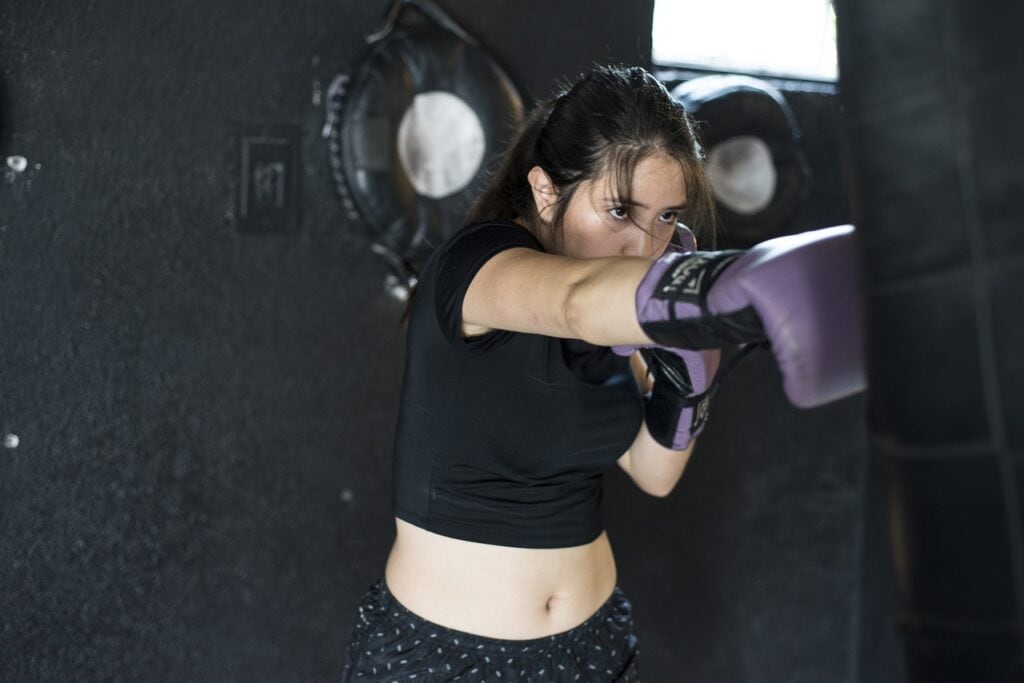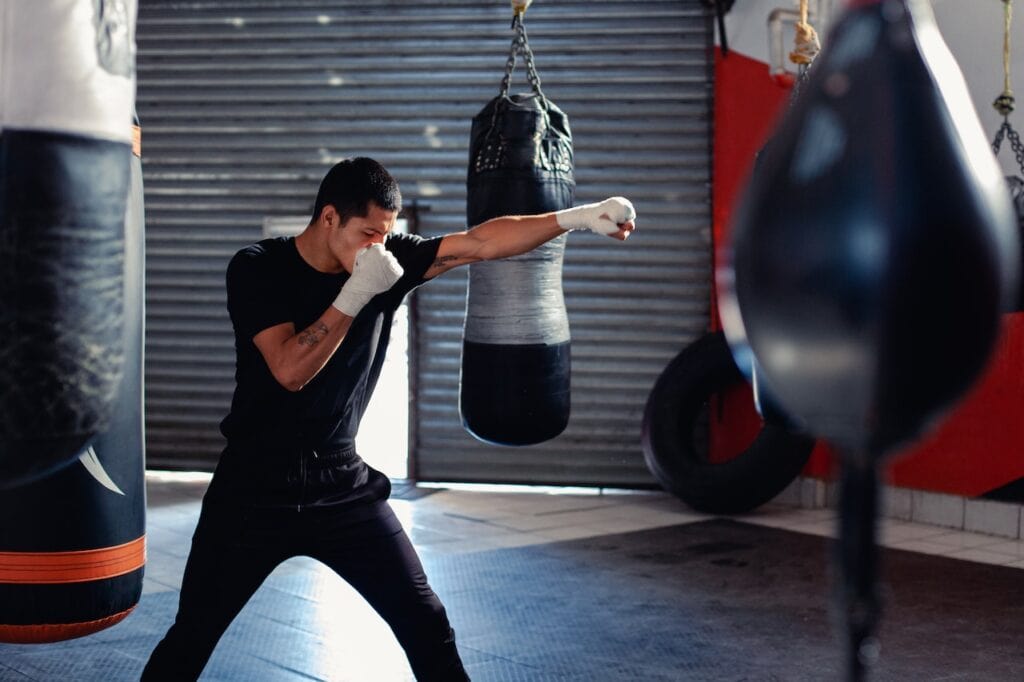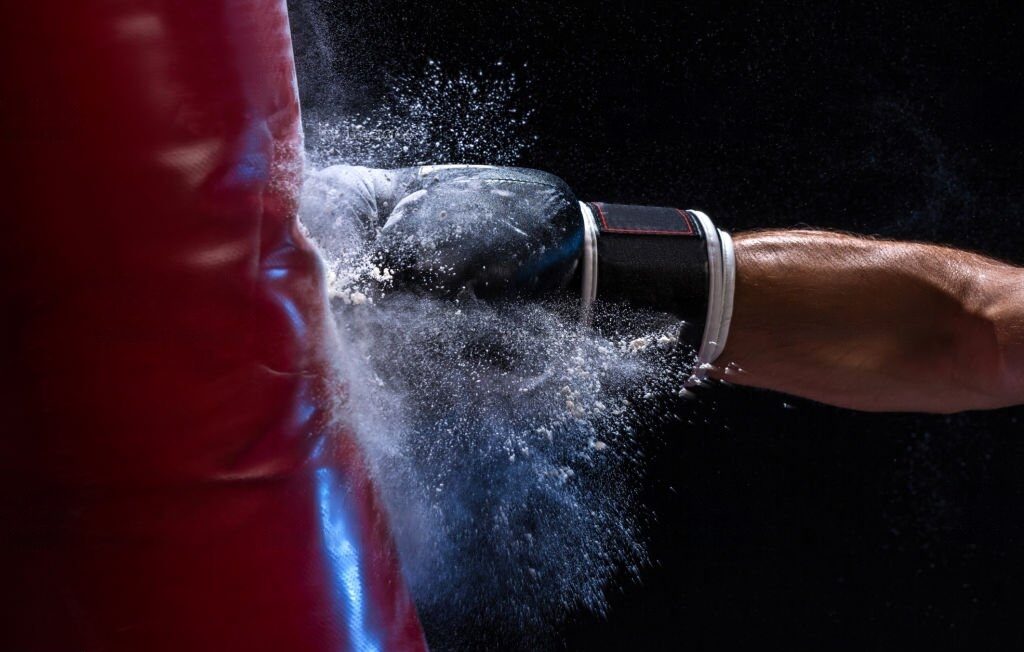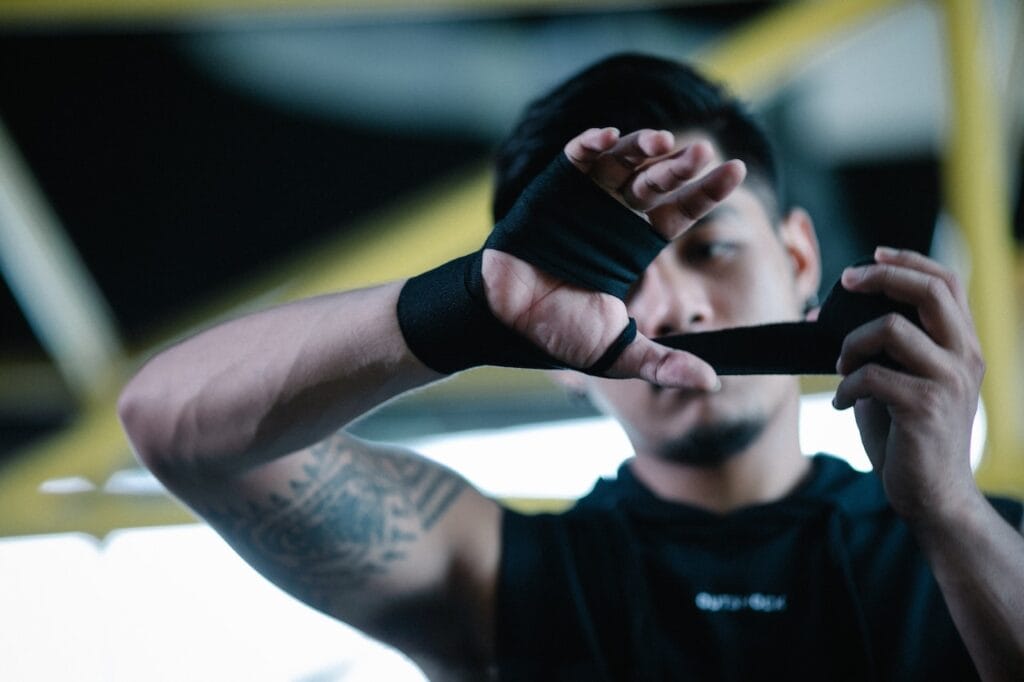The vast majority of boxing exercises need you to punch a heavy bag or, at the very least, have a pair of gloves on hand (no pun intended). Nevertheless, you rarely have one of those qualities if you aren't a fighter with a lot of dedication.
But despite that, it would be amazing to have the physique of some of the biggest boxers in the world (well, except Andy Ruiz, that is). For example, boxer Manny Pacquiao is 41 years old but looks better sculpted than many men half his age.
Or how about the undisputed champion of the heavyweight division, Anthony Joshua? He is the embodiment of what it means to be trim and disciplined.
Running around a ring while putting your hands in front of your face and trying to punch your opponent's lights out needs a lot of energy; as a result, you burn a considerable quantity of calories. It is the reason why most boxers are extremely ripped. The strain on the cardiovascular system is significant.
So the question is, how can you have the body of a boxer without buying their entire outfit?
Shadow boxing, which involves nothing more than tenacity and your fists, is something that is recommended in "The Mighty Mackem." This exercise routine can be completed in thirty minutes when you burn over two hundred calories.
Before you begin your workout, I want to go over some crucial suggestions with you:
Focus on the hips, shoulders, back, and legs when Jeffries tells you to "warm up." These muscles you'll use most during your workout, so it's important to get them ready.
The following pattern is meant by the term "Olympic footwork drill": throw a 1-2 jab, step back while putting your hands in front of your face for defence, and then step back for another 1-2. Continue doing that for the next two minutes.
You've trained hard enough, and it shows.
15-Minute At-Home Boxing Workout (Without equipment)
HOW CAN I DO BOXING AT HOME WITHOUT EQUIPMENT?
FightCamp Trainer Coach PJ will guide you through four rounds of high-intensity interval training with punch combos and a range of core exercises, such as the boxer's twist, flutter kicks, and sit-ups in this at-home boxing workout.
HOW CAN A BEGINNER START BOXING AT HOME?
It would help if you started your quest for better boxing fitness. But, even if you're starting in boxing and don't have a punching bag or boxing gloves, you don't need to worry because you can still get a wonderful boxing training exercise at home by shadowboxing along with Coach PJ. All you need is a pair of heavy bag gloves.
Boxing is an excellent form of exercise because it quickly raises your heart rate, ensuring that you are burning calories, and is also an incredible amount of fun. This entire workout is available to watch for free on YouTube in its entirety.
Let's get started with a brief warm-up, shall we?
WARM-UP (2 MINUTES)
Torso Twist (30 seconds)
- Turn to the left and right while twisting from the foot to the knee to the hip.
Twist punch (30 seconds)
- Doing a torso twist while adding a punch to each side is the final step.
Imaginary Jump Rope (30 seconds)
- While leaping up and down, give your wrists a light twisting motion, exactly like you would if you were jumping rope.
Point To The Stars (30 seconds)
- In the same manner as the torso twist, except this time, when you switch sides, bring both hands up to the "stars" (ceiling) in a sweeping motion.
Following the warm-up, you will perform the following rounds for three minutes, with a one-minute break. You'll be able to keep track of how many punches you throw thanks to the FightCamp trackers, and you may work toward meeting the target number of punches for each round.
ROUND 1 (3 MINUTES)
PUNCH GOAL MINIMUM - 200
Jabs | 1 (30 seconds)
- Deliver a series of six jabs in a row.
- Reset and continue for another thirty seconds.
Jab - Jab - Cross | 1 - 1 - 2 (30 seconds)
- Deliver two jabs to the left side.
- Deliver a right cross punch to the face.
- Iterate for another thirty seconds.
Jab - Jab - Rear Step - Rear Hook | 1 - 1 - Rear Step - 4 (30 seconds)
- Throw two jabs in their direction (left, right).
- Take a step to the side behind you.
- Toss a rear-hook punch.
- Iterate for another thirty seconds.
Repeat
Rest (1 minute)
ROUND 2 (3 MINUTES)
PUNCH GOAL MINIMUM - 200
Jab - Jab - Jab - Cross | 1 - 1 - 1 - 2 (30 seconds)
- Throw three fast punches at them.
- After that, go for the cross punch.
- Iterate for another thirty seconds.
Lead Uppercut - Rear Uppercut - Lead Hook - Lead Hook | 5 - 6 - 3 - 3 (30 seconds)
- The first punch you throw should be an uppercut.
- After that, deliver a back uppercut.
- Two lead hooks serve as the finishing blow for the punch combo.
- Iterate for another thirty seconds.
Jab - Cross - Jab - Cross + 2 Jumping Jacks | 1 - 2 - 1 - 2 + 2 Jumping Jacks (1 minute)
- Throw two rapid combos of jab and cross punches (1-2) in succession.
- After that, perform two sets of jumping jacks in a row.
- Reset and continue in this manner for one minute.
Jab - Cross - Lead Hook - Lead Hook + Squat | 1 - 2 - 3 - 3 + Squat (30 seconds)
- Deliver four rapid punches to the face (jab-cross - lead hook - lead hook).
- Squat Continue for the next thirty seconds.
Rest (1 minute)
ROUND 3 (3 MINUTES)
PUNCH GOAL MINIMUM - 220
Jab - Cross Coast | 1 - 2 Coast (30 seconds)
- Endless combinations of one jab and two crosses (1-2) for a quarter of a minute.
Power Coast Hooks (30 seconds)
- Switch between the front and rear hooks continuously for a quarter of a minute.
Jab - Cross - Lead Hook - Roll - Roll | 1 - 2 - Roll - Roll (30 seconds)
- Start with a jab, switch to a cross, and finish with a lead hook.
- Two times over.
- Iterate for another thirty seconds.
Repeat
Rest (1 minute)
ROUND 4 (3 MINUTES)
PUNCH GOAL MINIMUM - 140
Boxer's twist (30 seconds)
- Sit on the ground with your legs extended at a 45-degree angle and your feet firmly rooted to the ground.
- Turn to the left and right.
- Repeat for another thirty seconds.
Raise your feet off the ground and try to maintain your balance to increase the difficulty of the exercise.
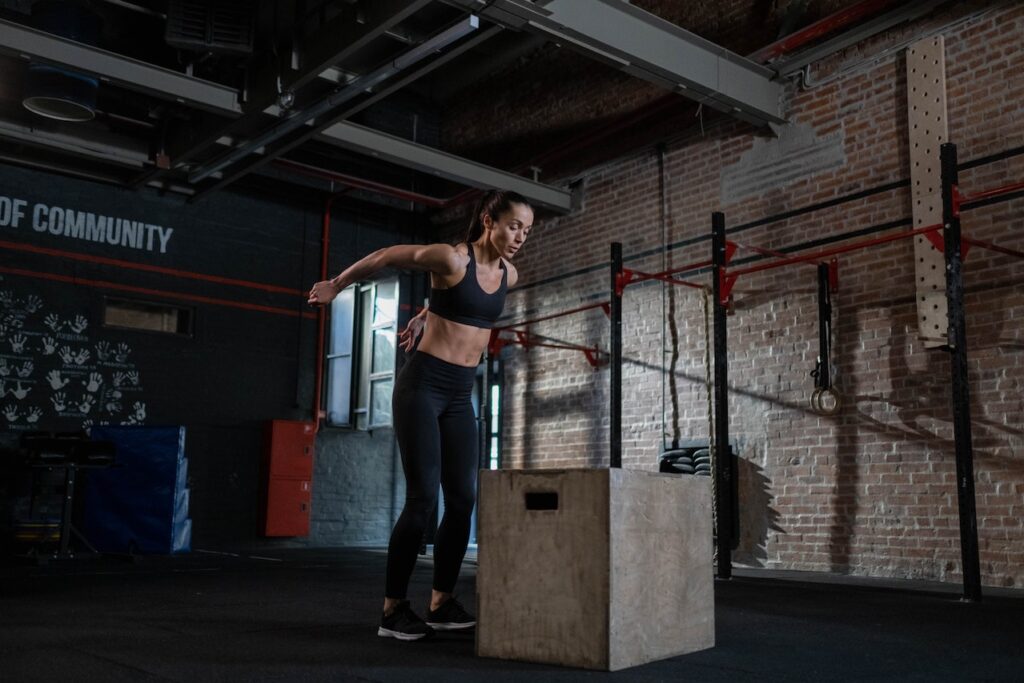
Flutter Kicks (30 seconds)
- Place yourself flat on the ground.
- To simulate swimming, lift your legs off the ground and perform a series of up-and-down kicks. Be careful that your legs do not make contact with the floor.
- Repeat for another thirty seconds.
Sit-Ups (30 seconds)
- Do as many sit-ups as possible in the allotted thirty seconds.
Burn Out Punches (30 seconds)
- Take a stance similar to that of a boxer.
- During a burnout round, you should throw as many punches as possible.
- Give it your all because the quicker you finish, the better!
Power Coast (1 minute)
- You can throw any punch combo you like. Just be sure to do it with power.
- Continue for 1 minute.
Rest (1 minute)
After completing cycle 4, you will finish your workout through the following cool-down exercises.
COOL DOWN (3 MINUTES)
Lat Stretch (12 seconds)
- Maintain an erect stance and move your arms in a circular motion while taking deep breaths.
Torso Twist (20 seconds)
- Turn on your heel, then your knee, then your hip, and continue turning up.
- Make careful you consistently twist to the left and right.
Torso Twist With Cross Punch (15 seconds)
- Carry out the torso twist again, then deliver a cross-body blow to each side.
Point To The Stars (20 seconds)
- Similar to the torso twist, but when you switch sides, bring both hands up to the "stars" (ceiling) in a sweeping motion.
Wide-Legged Toe Touches (20 seconds)
- Maintain a broad stance with your feet.
- Bend and twist your body to touch the toe on the opposite side with your hand.
- That should be repeated on the opposite side.
- Repeat for another twenty seconds.
Hip Circles (20 seconds)
- Make large circles with your legs facing outward.
- Alternative sides.
- Repeat for another twenty seconds.
Arm Circles (25 seconds)
- Do large circles with your arms in front of you for approximately ten seconds.
- Alternate directions and repeat the exercise, moving your arms counterclockwise for the remaining time.
Arm Swings and Cross (20 seconds)
- Swing your arms and cross them over and under your body.
Stretch (20 seconds)
- To conclude, stretch yourself by bringing both arms up behind your head and bending at the elbows.
- Maintain holding the position for twenty seconds.
A 20-Minute Boxing-Inspired Workout You Can Do at Home Without Gloves or a Bag.
Try This At-Home Boxing Workout — No Equipment Required
This workout is divided into three sections: cardio with the jump rope, abdominal exercises, and boxing combos. A boxer or fighter's routine combines cardiovascular and strength training.
Jumping rope is one of the most effective ways to improve aerobic endurance. It is important for fighters because they must be on their feet and move around the ring for extended periods.
When it comes to abdominal workouts, a strong core not only defends you from body punches but also ensures that you can optimise the strength of your punches because correct punching is a total-body motion that heavily involves the rotational power from your core.
Do the following exercises for thirty seconds each, completing the whole circuit four times.
- Jump rope coast (light pace)
- High knees with a jump rope (moderate pace)
- Crunches
- Leg raises
- Boxing combo 1: jab, cross, jab, cross, sprawl hop
- The second boxing combination consists of a jab, cross, lead hook, rear hook, and roll, roll
- Russian twists
- Taps on the shoulder
- Boxing combo 1: jab, cross, jab, cross, sprawl hop
- The second boxing combination consists of a jab, cross, lead hook, rear hook, and roll, roll
Move 1: Jump Rope Coast
- Do a light skipping motion in position over what you imagine to be a jump rope.
Move 2: Jump Rope High Knees
- When you jump over your make-believe rope faster, bring the opposite leg up first, one knee at a time, toward your chest.
Move 3: Crunches
- Position yourself so you are lying on your back with your knees bent and your feet flat on the floor next to your butt. Put both hands behind your head with your elbows pointing outward.
- Lifting your head, shoulders, and upper back off the floor using only the muscles in your abdominal region will need you to avoid drawing your neck too far into your chest.
- Reduce your height gradually while maintaining your composure.
Move 4: Leg Lifts
- Position yourself so that you are lying on your back with your hands under your tailbone for support, and your legs stretched out in front of you.
- Lift your legs till they are perpendicular to the ground while maintaining the position in which your knees are locked.
- Reduce the height of your legs by contracting your abdominal muscles. Concentrate on keeping them from touching the ground and try to float slightly above it.
Move 5: Boxing Combo 1
- It would help if you placed your non-dominant foot a few feet in front of the other foot while standing with your feet shoulder-width apart. For example, if you are right-handed, your right foot should be behind the left foot and slightly to the side, while your left foot should be in front of the right foot.
- Your rear arm should be tucked tight to your body, almost touching your ribs, while your lead hand (if you're right-handed, your lead hand is your left) should sit at approximately eye level. If you're right-handed, your lead hand is your left. Protect your face by always keeping your back arm along your cheekbone.
- Jab: Extend your lead hand (the same side as your front leg) and punch straight out while simultaneously pulling your arm back in.
- The cross is performed by first pulling the arm back in and then punching straight out with the hand on the same side as the leg behind you.
- A second blow should be delivered with your dominant hand.
- Cross: Deliver a second blow with your backhand.
- The spread jump is performed by placing one's hands on the ground in between one's feet, hopping back into a high plank position, and then hopping back to one's hands. Then, get up and give it a jump.
Move 6: Boxing Combo 2
- It would help if you placed your non-dominant foot a few feet in front of the other foot while standing with your feet shoulder-width apart. For example, if you are right-handed, your right foot should be behind the left foot and slightly to the side, while your left foot should be in front of the right foot.
- Your rear arm should be tucked tight to your body, almost touching your ribs, while your lead hand (if you're right-handed, your lead hand is your left) should sit at approximately eye level. If you're right-handed, your lead hand is your left. Protect your face by always keeping your back arm along your cheekbone.
- The jab is performed by punching straight out with the hand on the same side as the front leg and then bringing the other arm back in.
- The cross is performed by first pulling the arm back in and then punching straight out with the hand on the same side as the leg behind you.
- You can execute a lead hook by extending your lead arm slightly to the side of your body, then bending your lead arm's elbow to a 90-degree angle as you swipe across your body. Next, do a small weight transfer to the leg before you.
- As you perform the rear hook, your rear arm should be thrown out to the side of your body slightly. Then, your elbow should be bent to a 90-degree angle as you swipe across your body. Finally, shift to the side behind you, but keep your weight on your front leg.
- Roll: While keeping your arms in a fighting stance (refer to step 2), lower your head and lean to the side of your back leg as if trying to avoid being punched. Bend both knees. You'll also have a slight backward tilt toward the leg behind you.
- To roll, duck again by bending your knees and leaning toward your lead leg while moving slightly forward.
Move 7: Russian Twists
- Place yourself on the ground and bend your knees so that your feet are raised off the ground. Next, place both hands in a prayer position in the middle of your chest.
- Turn your body to the left and bring your hands down with you, bringing them into contact with the ground on your left side or coming very close to doing so.
- When coming back through the middle, twist to the right side of your body while bringing your hands along.
- Continue alternating side to side.
Move 8: Shoulder Taps
- It would help if you began in a high plank position, the top of a push-up, with your hands under your shoulders and your body straight from your head to your heels.
- Raise your right hand off the ground and make a tapping motion on your left shoulder.
- Bring your hand back to its original position, then repeat the process on the opposite side.
- Continue to bring your right hand to your left shoulder and your left hand to your right shoulder in alternate motions while ensuring that your hips remain square to the ground.
A 30-Minute Full-Body Kickboxing Workout — No Equipment Required
The moves
Punch Numbers
In kickboxing, each punch is given a number and scored accordingly. After that, those numbers are employed to create a variety of various combinations. The following is the punch that you should be throwing whenever you see the digits 1–6 during the workout:
1: Jab
2: Cross
3: Lead hook
4: Hook in the back
5: Uppercut to the lead
6: Rear uppercut
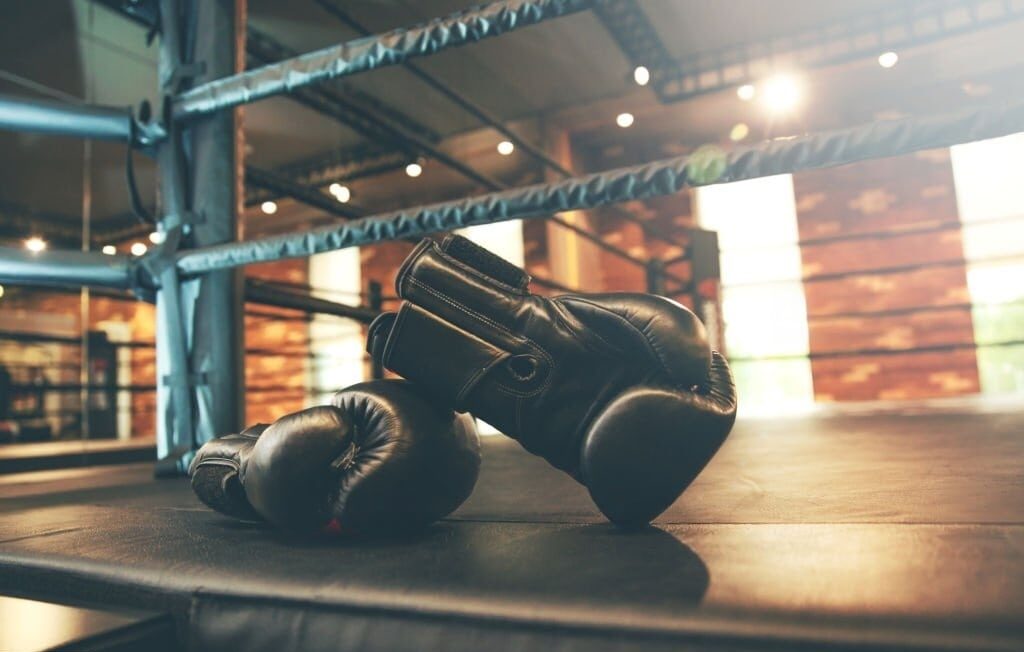
Floor Exercises
While standing in a boxer's stance, bend your knees as you shift your weight to your back foot and rise. This action is the roll. But first, you must flex your knees and put your weight on the foot in front of you.
Stand with your feet slightly wider than hip-width apart while you perform the squat kick. It would help if you drove your hips backwards as you bend your knees and lower yourself into a squat.
As you stand up and stretch your legs out in front of you, "kick" or extend one of your legs forward. Alternate between squatting and kicking with each leg in turn.
The skipping knees exercise involves performing a jump on the right leg while simultaneously bringing the left knee toward the chest. When your knee rises, engage your abdominal muscles and press your hips forward. Repeat while alternating between your legs.
Start in a prone position with your feet flat on the floor, your knees bent, and your hands behind your head for the first two reps of the sit-up exercise. After bringing your body into a sit-up position, immediately follow it by throwing a 1-2 punch (a jab and a cross) and returning to the beginning position.
Pull one knee against your chest as you come into plank position for this mountain climber variation. In one fluid motion, switch the position of your legs while maintaining the position of your hands. You can ramp up the intensity by increasing the speed of the legs.
Right kick/Left kick: Extend or kick the right leg from a standing stance while gently turning in the right hip. It will set you up for the left kick. First, remove the foot from the down position, then repeat the process on the left side.
Squat jumps are performed by standing with your feet slightly further apart than hip-width apart and lowering yourself into a squat position. As you rise, explode to a leap. After safely landing on your feet, perform the squat by lowering yourself back down to starting position.
30-minute full-body kickboxing workout
It is a six-round circuit training session. There is a one-minute break between each round, and each round lasts four minutes. Before you begin, ensure you have allowed your body to warm up by performing two minutes' worth of jumping jacks.
A shadowboxing combination and a floor workout will be performed during each round alternatingly. Before you try each combo on your own, watch Rusth perform it in one of the videos down below! Prepare to break a sweat!
Round 1
- 1 minute: 1-2-3-4-Roll-Roll.
- Squat kick for 30 seconds, then 1-2-3-4-Roll-Roll for 1 minute.
- Squat kick for 30 seconds, then 1-2-3-4-Roll-Roll for 1 minute.
Round 2
- One minute: 1-2-L 30 seconds: skip knee 1 minute: 1-2-L (elbow, right elbow, left elbow).
- 30 seconds of the elbow-to-elbow elbow: Skip knee
- One minute: 1-2-L Right Elbow-Left Elbow.
Round 3
- 1 minute: 5-6-5-6-U-U.
- Sit up 1 2 for thirty seconds.
- 1 minute: 5-6-5-6-U-U.
- Thirty seconds: Sit up 1-2.
- 1 minute: 5-6-5-6-U-U.
Round 4
- One minute: 1-2-1-2-Slip right-Slip left.
- Climber climbing a mountain 30 seconds later.
- Mountain climber 1 minute: 1-2-1-2-Slip right-Slip left.
- One minute: Mountain climber.
- One minute: 1-2-1-2-Slip right-Slip left.
Round 5
- 1 minute: 1-2-3-2.
- Thirty seconds: 2 Right kicks/2 Left kicks.
- 1 minute: 1-2-3-2.
Round 6
- 1 minute: 1-2-1-2-Sprawl.
- Thirty seconds: Jump squat.
- 1 minute: 1-2-1-2-Sprawl.
- Jump squat for 30 seconds.
- 1 minute: 1-2-1-2-Sprawl.
Get some water. Stretch. Be proud.
There is no doubt that the unique coronavirus pandemic has presented us with many situations that have never occurred before (such as the closure of all gyms), coupled with extremely high levels of tension, worry, and dissatisfaction. One thing that might be of assistance? Keeping oneself busy. Particularly beneficial for relieving tension is the sport of boxing.
The punching part of boxing helps reduce muscle tension and encourages you to concentrate on your training (allowing you to forget your stress and turn it off from the outside world). 94% of people who have used FightCamp stated feeling less anxious after beginning a boxing regimen.
Yet, what are you expected to do if the boxing studio you normally go to is closed for the foreseeable future? The at-home boxing workout below to get your heart rate up, sculpt your arms, and trim your abdominal muscles. It will only take twenty minutes, and you won't need a punching bag or gloves to accomplish it (so there are no more excuses!).
Conclusion
In conclusion, if you find that you are short on time, do not have a gym membership, or want a more convenient way to work out, then training at home with these boxing routines is a terrific choice.
There are a lot of advantages to performing these workouts in the comfort of your own house, including the fact that you don't need any equipment, which lowers the expense of that equipment, and the fact that your body will get considerably greater results from working out more frequently.
Those who are working with a limited amount of money will find this to be a wonderful alternative. In this manner, one can still engage in a vigorous workout on their own time without investing in costly exercise equipment.
Frequenly Asked Questions
Can a beginner boxing workout without equipment help me lose weight?
Yes, a beginner boxing workout without equipment can be an effective way to lose weight. Boxing involves dynamic movements that engage multiple muscle groups and elevate your heart rate, promoting calorie burning and fat loss. Additionally, the combination of cardio exercises, bodyweight movements, and high-intensity interval training (HIIT) elements in a boxing workout can boost your metabolism and improve overall fitness. However, pairing your workouts with a balanced diet and healthy lifestyle choices is important for optimal weight loss results.
Can I build strength and endurance with a beginner boxing workout without equipment?
Yes, you can definitely build strength and endurance through a beginner boxing workout without equipment. Bodyweight exercises like push-ups, burpees, squats, lunges, and planks engage multiple muscle groups, helping you develop strength and endurance. Additionally, shadowboxing and cardio exercises like jumping jacks and high knees can improve your cardiovascular fitness. As you progress, you can also incorporate interval training and circuit workouts to enhance your strength and endurance further.
How long should a beginner boxing workout session last?
For beginners, a typical boxing workout session can last around 30 to 45 minutes. This duration allows you to focus on various aspects of training, including warm-up exercises, technique drills, shadowboxing, conditioning exercises, and cool-down stretches. As you progress and improve your fitness level, you can gradually increase the duration of your workouts.
How often should I do a beginner boxing workout?
For beginners, starting with two to three sessions per week is recommended. This frequency allows your body to adapt and recover between workouts. As you progress and feel more comfortable, you can gradually increase the frequency to four or five sessions per week. Remember to listen to your body and give yourself enough rest to avoid overtraining.
How can I improve my boxing technique without equipment or a partner?
While having a partner or equipment can enhance your training, you can still improve your boxing technique without them. Here are a few tips:
- Shadowboxing: Practice your punches, footwork, and defensive movements in front of a mirror. Focus on maintaining proper form, balance, and coordination.
- Technique drills: Incorporate specific boxing drills, such as practising your jab-cross combinations, hooks, and uppercuts. Visualize your opponent and work on precision and speed.
- Online resources: Utilize online tutorials, instructional videos, and training programs designed for solo training. They can provide guidance, tips, and techniques to improve your skills.
- Visualization and mental rehearsal: Spend time mentally rehearsing your techniques, visualizing yourself and executing them with precision and fluidity. This can help improve muscle memory and enhance performance when you do have access to a partner or equipment.
